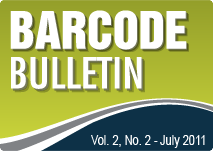DNA analysis helps to optimize control measures
By Johnny Roberts*
In appearance, it is not unlike a common housefly, but there the similarity ends. The blood-sucking African tsetse fly (including all species in the Glossina genus) transmits Human African trypanosomiasis, also known as sleeping sickness, making it one of the world's most dangerous disease vectors.
Click photo to enlarge
Tsetse flies are notoriously difficult to observe in nature. They don't form swarms, preferring to rest alone in bushes waiting for a source of warm blood to wander by. This creates big challenges for scientists and public health officials, who need to observe the insects' hosts, identify the organisms they feed on and understand feeding patterns in the ongoing campaign to devise effective control strategies.
They are challenges tailor-made for DNA barcoding and researchers affiliated with iBOL Working Group 1.4 - Animal Parasites, Pathogens and Vectors. By barcoding the blood meal of tsetse flies trapped at specific locations, researchers can target them by region and feeding preference, and optimize control measures depending on the prey.
"We want to guide control strategies that meet the specific needs of the areas where tsetse flies are present and a threat," says WG 1.4 chair Dr. Daniel Masiga, research scientist and Head of the Molecular Biology and Bioinformatics Unit at the International Centre of Insect Physiology and Ecology (ICIPE) in Nairobi. "This will reduce the risk of trypanosomes coming into contact with all life forms."
Masiga says information on the source of tsetse fly blood meals is essential in understanding the relationship between hosts and vectors, and their respective roles in the trypanosomiasis transmission cycle.
It's a vital mission. An estimated 70,000 people in 36 countries of sub-Saharan Africa are currently infected with trypanosomiasis. The most recent epidemic, in Uganda in 2008, caused 48,000 deaths. The annual economic impact is estimated at US$4.5 billion with around three million cattle dying from tsetse-transmitted trypanosomes every year.
Tsetse flies are resourceful and opportunistic and feed on whatever suitable hosts are available. But when there's a shortage of prey, their choices are mainly guided by their sense of smell. Masiga and Catherine Muturi, a Master's student at Kenya's Egerton University, used Ngu, special traps developed at ICIPE, to catch tsetse flies in Tanzania, Kenya and Uganda, focusing on areas where humans and livestock are regularly exposed to the insects.
Click photo to enlarge
The trap is a kind of scarecrow that looks enough like a cow to trick the tsetse fly. Lured by the smell of cow’s urine contained in a bottle, they are irresistibly attracted by the blue cloth on either side of the trap. The black cloth in the middle invites the flies to settle. They then fall into the trap and die.
The flies' midguts were dissected and blood meals were DNA barcoded to determine the sources. Initial barcode analysis of the blood meal showed that most tsetse flies feed from single sources. Out of 13 engorged tsetse flies caught in the Nguruman area of Kenya, six had fed on African savanna elephants and five on warthogs, while one fly each had fed on an African buffalo and a baboon. All 12 flies sampled in Busia (eastern Uganda/western Kenya) had fed on cattle. In the Serengeti ecosystem, wildlife were the "blood donors" - African buffalo, giraffe, warthog, African savanna elephant and spotted hyena.
"In Busia, where livestock are the more likely sources of blood, spraying cattle with a suitable insecticide can be an effective strategy," said Masiga. "However, in areas where wildlife species are the main source of blood for tsetse flies, trapping devices or insecticide treated targets are appropriate."
In the latter case, tsetse flies pick up a lethal dose of insecticide when they land on cloth treated with the chemical. Scientists at ICIPE have previously shown that certain chemicals, for example those found in bovine urine, attract tsetse flies.
But it is the barcode analysis of blood meals that holds greatest promise for reducing the health and economic threats posed by this notorious vector. "Knowing precisely what tsetse flies feed on helps us guide control efforts," says Masiga.
*Johnny Roberts is with the Students Promoting Awareness of Research Knowledge (SPARK) program at the University of Guelph.
Back to Barcode Bulletin Index


 Tracking the tsetse with barcodes
Tracking the tsetse with barcodes

